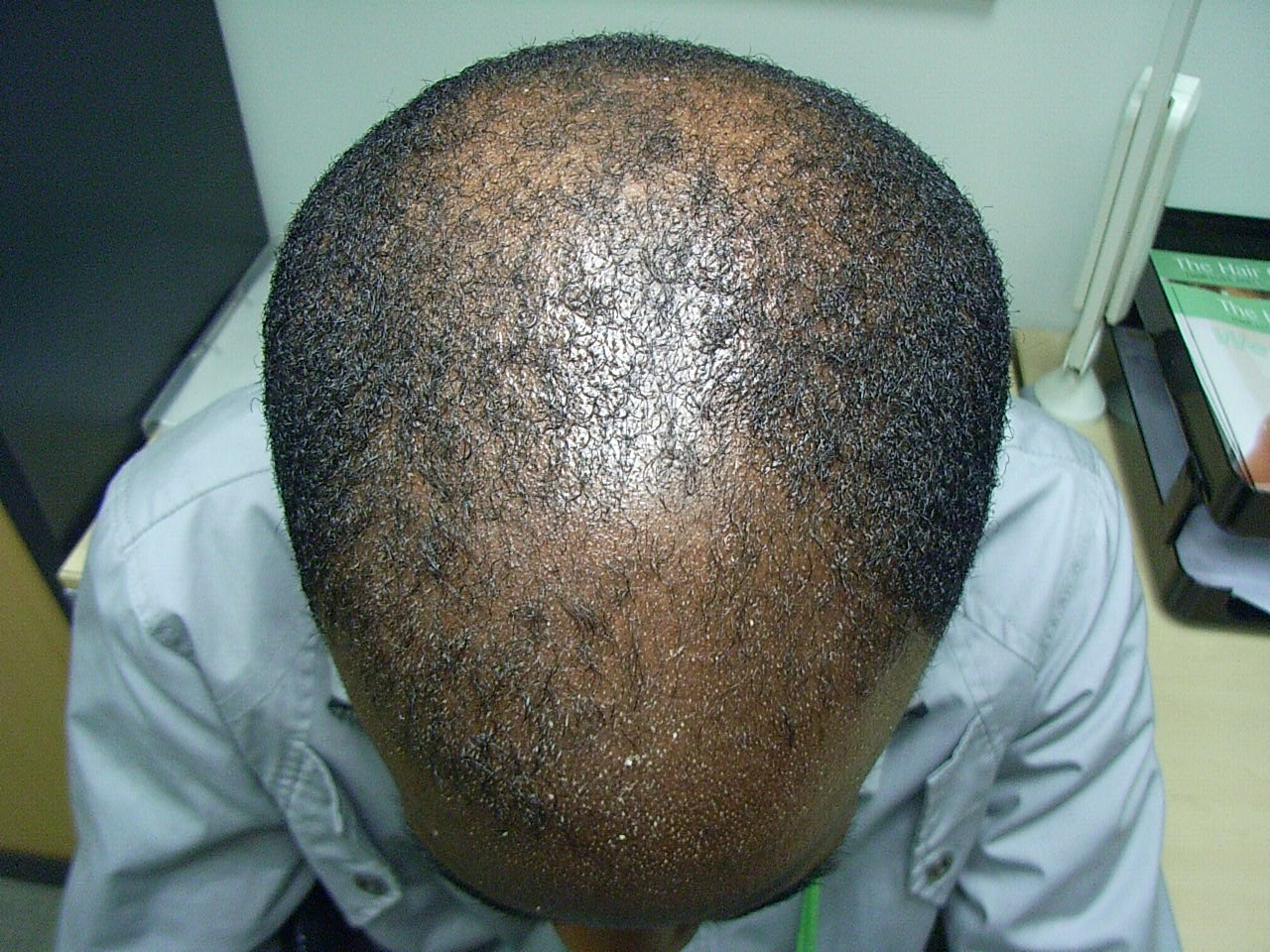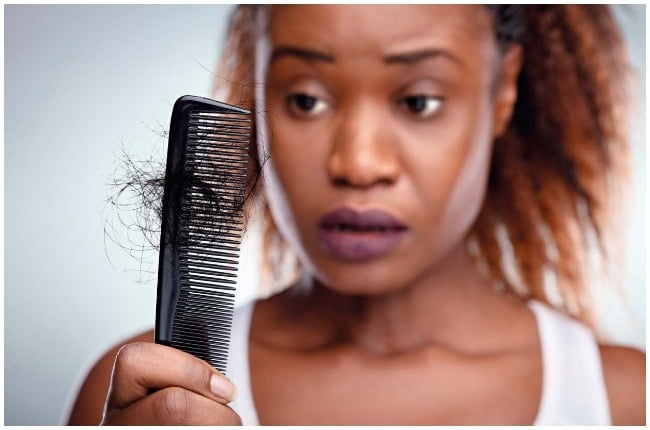How to Identify & Prevent Hair Breakage [Moisture + Protein Deficiency]
The Caribbean Secrets Cosmetics Blog is dedicated to educating our community about hair care tips, techniques, and history that will help maximize your curly hair's potential. Your curly hair deserves growth, more definition, and moisture throughout the day. We feel that having healthy hair is important and is vital to the productivity in our communities around the world because when your hair looks good you will be more confident and perform better in everything you do. We want to be apart of your journey. Our aim is to give your hair-care regimen an extra boost because we value you and your curly hair. We hope that this helps!
HAIR BREAKAGE
Do you want to grow out your hair but haven't had any luck? Are you experiencing hair breakage? Are you tired of finding clumps of hair in your sink and combs?
If you answered yes to any of these questions you probably have a moisture, protein imbalance in your hair. The rate in which your hair grows depends on a variety of factors which includes genetics, your environment, and your hair care routine. In this blog we will be discussing how what you put into your hair affects the way it grows and the overall strength of your hair.
The cause of hair breakage and a lack of overall growth caused by protein and moisture imbalances in the hair fiber are commonly brought on by improper product use. Other causes may include stress, radiation/chemotherapy, and/or intense chemical hair treatment (relaxer, coloring, etc.).

It is important to understand that it may be virtually impossible to completely rid your hair of breakage, however when breakage levels are managed and controlled correctly, your hair will be in its healthiest state and retain most of its length.
Hair breakage tends to occur in two basic forms: protein-induced hair breakage (moisture deficient) and moisture-induced hair breakage (protein deficient). Now the questions you should be asking yourself is: which one am I suffering from, what are the causes, how serious is my breakage and how do I fix it?
Below, we have provided assessments (tests) that you can try at home that will help you determine whether or not you are suffering from moisture or protein deficiency.
Wet Hair Assessment
To determine if your hair may be suffering from moisture or protein deficiency you must pay close attention to the way your hair feels when it is wet during your shampoo and conditioning sessions. Is it spongy? Hard? Stretchy? Fragile? Does it dry very quickly? Does it take a while to get fully wet? How many broken hair strands do you experience after washing and conditioning your hair? Were you shampooing too roughly? Were you combing out your hair too roughly? Once you develop a more in-depth relationship with your hair after asking yourself these questions while your hair is wet, you should form a baseline for how your hair should feel, and you will be able to properly catch and diagnose any deviation from your hair’s normal state.

Your hair may be moisture deficient if when your hair is wet it feels rough, hard, tangly, and/or your hair does not stretch much before breaking. Causes of moisture deficiency include excess sun exposure, the use of harsh shampoo products, and the overuse of styling techniques such as blow drying and flat ironing can all trigger moisture deficiency in the hair. These stressors evaporate moisture from your hair strands and could also prevent the entry of moisture into your strands. The over-utilization of protein-rich products may also cause moisture deficiency in your hair, causing your hair to be inelastic and rigid.
Your hair may be protein deficient if when your hair is wet it feels weak, gummy, limp, and/or your hair stretches and stretches before breaking. Causes of protein deficiency include chemical processing, permanent coloring, excessive heat use, sun damage, and radiation/chemotherapy. These processes may cause damage to the hair cuticle causing protein deficiency.
Level of Breakage
Once the source of your breakage is discovered it may be useful to identify the level of breakage that you are experiencing in order to help with your product selection to remedy the breakage.
There are three breakage levels---
- Zone 1
- Zone 2
- Zone 3
Zone 1 is considered the healthy zone, where your hair is balanced and breakage is minimal. Breakage usually occurs in Zone 1 when your hair is handled roughly.

Zone 2, the moderate zone, where your hair is in between healthy and severe breakage. Your hair is usually in Zone 2 as a result of Zone 1 breakage being neglected or mistreated. For example, if you apply protein conditioning in your hair when it actually needs moisture or applying too much moisture into your hair when it actually needs more protein. You know your hair is in Zone 2 breakage if there is no more than ten to fifteen hairs lost on non-wash days and no more than fifteen to twenty hairs lost on wash days. Medium to large clumps of hair may be lost after detangling and comb-out.

Zone 3, the severe breakage Zone, this occurs when hair breakage has gone untreated in the previous zones. Your hair is in Zone 3 breakage when your breakage count is more than ten to fifteen hairs lost on non-wash days and more than fifteen to twenty hairs lost on wash days. Results of Zone 3 breakage may include a see-through “hemline” along the ends of your hair, a receding hairline, “light spots” on your head or large clumps of hair being left in your comb after detangling your hair.

How to Cure Zone 2 and 3 Low Protein Hair Breakage
Personal Story...
About 5 years ago a relative of ours experienced severe hair loss after going through radiation therapy. About one year after growing his hair back, it grew back limp and he experienced a great amount of hair breakage. After two years of growing his hair our relative attempted to grow locks but could not sustain the style because his hair could not sustain the regular stress of “re-twisting” his hair. As a result he lost some of his locs because his hair lacked protein. He decided to cut them and start all over. It wasn’t until 2020, after doing extensive research, when we discovered why his hair has been so weak after all these years. It was do to the radiation therapy that caused his hair to loose its original structure. As a result of this “ah ha” moment we decided to put our relative on a corrective regimen to help him on his journey to healthy hair growth.
We did this regimen once a week and began to see results immediately.
- Wet hair with luke-warm water and make sure that the water is evenly distributed amongst your scalp.
- Detangle your hair with a wide-tooth comb or pick.
- Use Caribbean Secrets Shampoo (sulfate free) to lift debris or product buildup from hair.
- Gently massage Caribbean Secrets Shampoo with the pads of your fingers
- Rinse Caribbean Secrets Shampoo out thoroughly with luke-warm water.
- Apply Caribbean Secrets Crème to your hair.
- Cover the hair with a plastic cap, and apply heat for 10 -15 minutes to support optimal product penetration.
- Allow hair to cool for about 7-10 minutes.
- Rinse out Caribbean Secrets Crème thoroughly with cold water.
- Finish with Caribbean Secrets Haitian Castor Oil to seal the hair.
Be sure to monitor your hair as you complete the regimen and take note of your progress.
We hope that this blog has helped you gain a better understanding of hair breakage and what you can do to solve it! Please use this information at your discretion to better approach your hair care journey.
Book Source:
The Science of Black Hair: A Comprehensive Guide to Textured Hair Care by Audrey Davis-Sivoasothy
